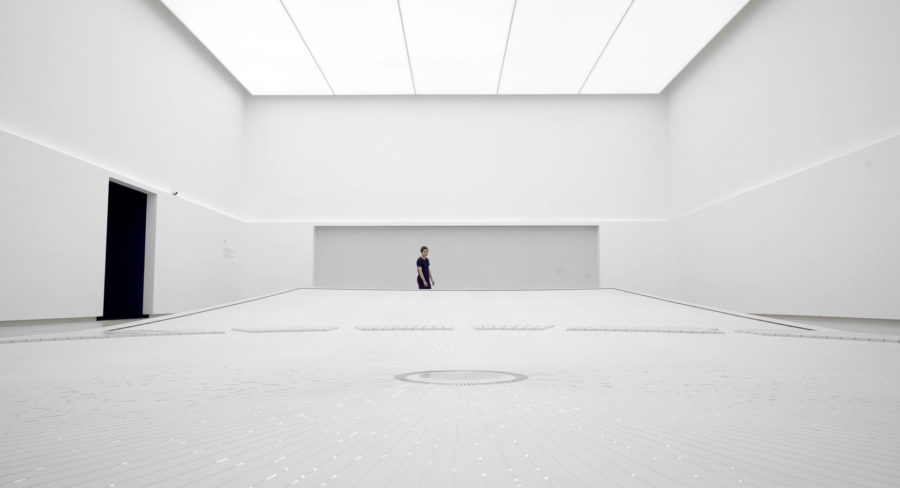Hyundai Pavilion PyeongChang Winter Olympics 2018

Description
On the occasion of the 2018 Winter Olympics in PyeongChang, South Korea, Asif Khan designed an extraordinary pavilion for Hyundai. It was regarded as the darkest building on earth and housed a fascinating water installation. The aim was to present the brand's first fuel cell vehicle by means of architecture, design and a visitor experience.
Even the long-distance effect of the building was unique. The Vantablack VBx2 sheath was able to absorb 99% of the light falling on it. As a result, the pavilion seemed to have lost its three-dimensionality and created the illusion of a startling black area. Upon closer examination, thousands of tiny lights were discovered in the facade. They simulated the view into space.
Inside, visitors were surprised by the complete opposite: a bright white room. The central experience was the embedded water installation. She let 25,000 drops of water slip through the room every minute, colliding, connecting and forming a lake that finally disappeared into nothingness.
The idea of the black facade was to represent the universe - the origin of hydrogen. The water droplet installation inside was inspired by hydrogen molecules and hydrogen technology. The vision for the future of the automobile should be conveyed through architecture, design and a visitor experience.
(Editiorial text. Please contact us for change requests.)